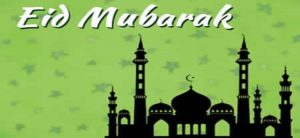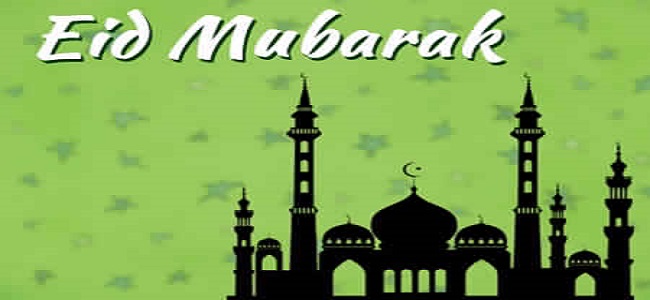 Eid in India is a unique showcase of the nation’s multiculturalism. The festival tears down all walls and unites us together in a beautiful bond.
Eid in India is a unique showcase of the nation’s multiculturalism. The festival tears down all walls and unites us together in a beautiful bond.
A transgender Hindu woman who loves covering her hands with mehendi every Eid and offers a prayer for peace on Chaand Raat, a Sikh artist who makes a unique ‘unity rangoli’ on Eid at his home, inter-religious couples for whom the festival is a beautiful occasion to spread the message of love and harmony, a Sufi Muslim historian who throws open her kitchen to strangers to relish Eid delicacies —no one celebrates Eid the way Indians do.
The festival is a great occasion to salute the soul nourishing, unmatched diversity of India that wipes out all prejudices and makes us so proud. May this Eid be shubh for you!
Eid and Diwali have the same essence
For us, both are occasions to spread the message of love and harmony,” says Husain. (Raajesh Kashyap/HT Photo)
Every year, beauty maven Shahnaz Husain’s house in Delhi’s Greater Kailash is decorated with mogra and roses. There are vintage candlestands, golden upholstery and rare crockery passed on from generations at display. The dining table is covered with rose petals and scrumptious food that includes dum biryani, delicately flavoured kakori kababs, galauti kabab and shami kebab, khamiri roti and kesari kheer made by their khansama from Lucknow. “As children, we looked forward most of all to the Eidi…the gifts that children received! As a little girl, I would be so excited to receive beautiful dolls or cooking set. It was an open house and everyone was greeted traditionally, with flowers and sprinkling of rose water. The fragrance still lingers in my memory,” reminisces Husain. Not much has changed since then, except that now her husband, entrepreneur Raj Puri also joins her in the celebrations. “Eid and Diwali are based on common principles of love, harmony and charity. On both the festivals, the celebrations are similar in our home. For us, both are occasions to spread the message of love and harmony,” says Husain.
Mili-Juli Eid
Abu Sufiyan, her friend, founder of the portal Purani Dilli Walo ki Baatein, recently organised an iftar at a Hindu family’s haveli.
There are no walls between homes and hearts in the Walled City. Pots and pans are exchanged, along with clothes and food. “Plates toh ab hote hain. Pehle sab ek ghauri se khaate the (There was hardly a concept of plates before. Everyone used to eat from one platter),” says Sadia Syed, a teacher by profession, and an Urdu aficionado at heart, whose house is thronged by her neighbours of all faiths to feast on her famous keema kachoris. She goes about laying the dastarkhan with great care, because each ghouri and each baadiyen (bowl) is meant for a particular dish or sherbet (drink). These customs are to be found in a places as old as Shahjahanabad. Abu Sufiyan, her friend, founder of the portal Purani Dilli Walo ki Baatein, recently organised an iftar at a Hindu family’s haveli. “It was very last moment, but Mathur Saab (Ashok Mathur, his friend) and his wife graciously opened their doors for us. Ours was a strictly non-vegetarian spread, and they are pure vegetarians. This is our Ganga-Jamuni tehzeeb,” he says.
Eid is about making everyone your own
“Bonds are formed when you open your door, your heart to strangers. That’s the true essence of Eid,” says Safvi.
You don’t get to choose your family but you can definitely pick your friends, says food historian Rana Safvi . Eid for her is all about opening her house to strangers and treating them to a scrumptious Eid meal. “Bonds are formed when you open your door, your heart to strangers. That’s the true essence of Eid,” says Safvi. Her Eid platter consists of murgh musallam, nargisi kofta, kheer, seviyan and more. “Musallam means whole. The chicken is marinated in ginger-garlic paste and is stuffed with whole eggs and seasoned with various spices. Often,
dry fruits are also stuffed inside the chicken. The word nargisi comes from the flower narcissus. Nargisi kofta is made by the mixture of two meats — raw and cooked, which is wrapped around a boiled egg. This boiled egg is fried and then cut into half,” explains Safvi, as she busies herself in preparing a hearty feast for her neighbours and their families and friends she has never met before.
Chand raat and a prayer of hope
Transgender activist Rudrani Chhetri has been celebrating Eid for many years now at her friends’ place, but this time she is hosting a feast at her house.
Transgender activist Rudrani Chhetri has been celebrating Eid for many years now at her friends’ place, but this time she is hosting a feast at her house. She will keep a fast on Alvida Jumma, the last Friday of Ramzan. Born in a different faith, she enjoys taking part in customs of another religion. “Our generation is above these differences. Festivals are about sharing joy,” she says. She plans to dress up this Eid. “I will decorate my hands with henna on Chand Raat. Kehte hain ki yeh chand khushiyaan le ke aata hai. I pray that peace and love prevails in our nation and our beautiful diversity keeps uplifting our souls,” she says.
Entwined in love
“Celebrations go beyond the barriers of religion. I see Hindus, Sikhs, and Christians warmly partake in Eid festivities. This makes us so proud of our multicultural identity,” says Meera Ali. (Manoj Verma/ Ht Photo)
Eid in India reminds us of our unique oneness. “Our diverse culture is what makes us different, and Eid is a testimony to this,” says designer Meera Ali, who celebrates the festival every year with her husband, designer Muzaffar Ali, and daughter Sama. “Celebrations go beyond the barriers of religion. I see Hindus, Sikhs, and Christians warmly partake in Eid festivities. This makes us so proud of our multicultural identity,” she says.
This floral Eid rangoli is a visual delight
This floral Eid rangoli has been made by artist Harinder Singh of Studio 1469. “ We must keep recalling Guru Nanak Ji’s message of universal harmony. Eid is one of the great occasions to do so,’ says Singh.
Source : https://www.hindustantimes.com/art-and-culture/eid-mubarak-in-india-the-festival-transcends-the-barriers-of-religion/story-YyYLvJs8gqnekEGHwnZbnM.html

